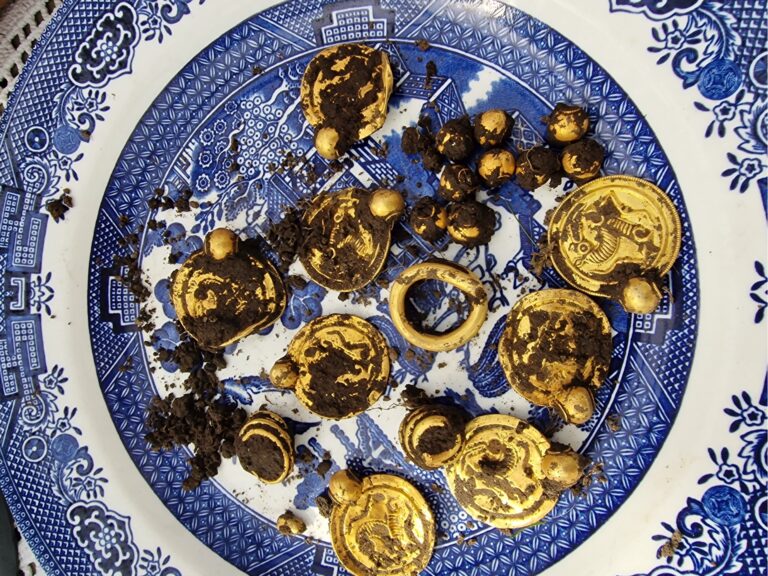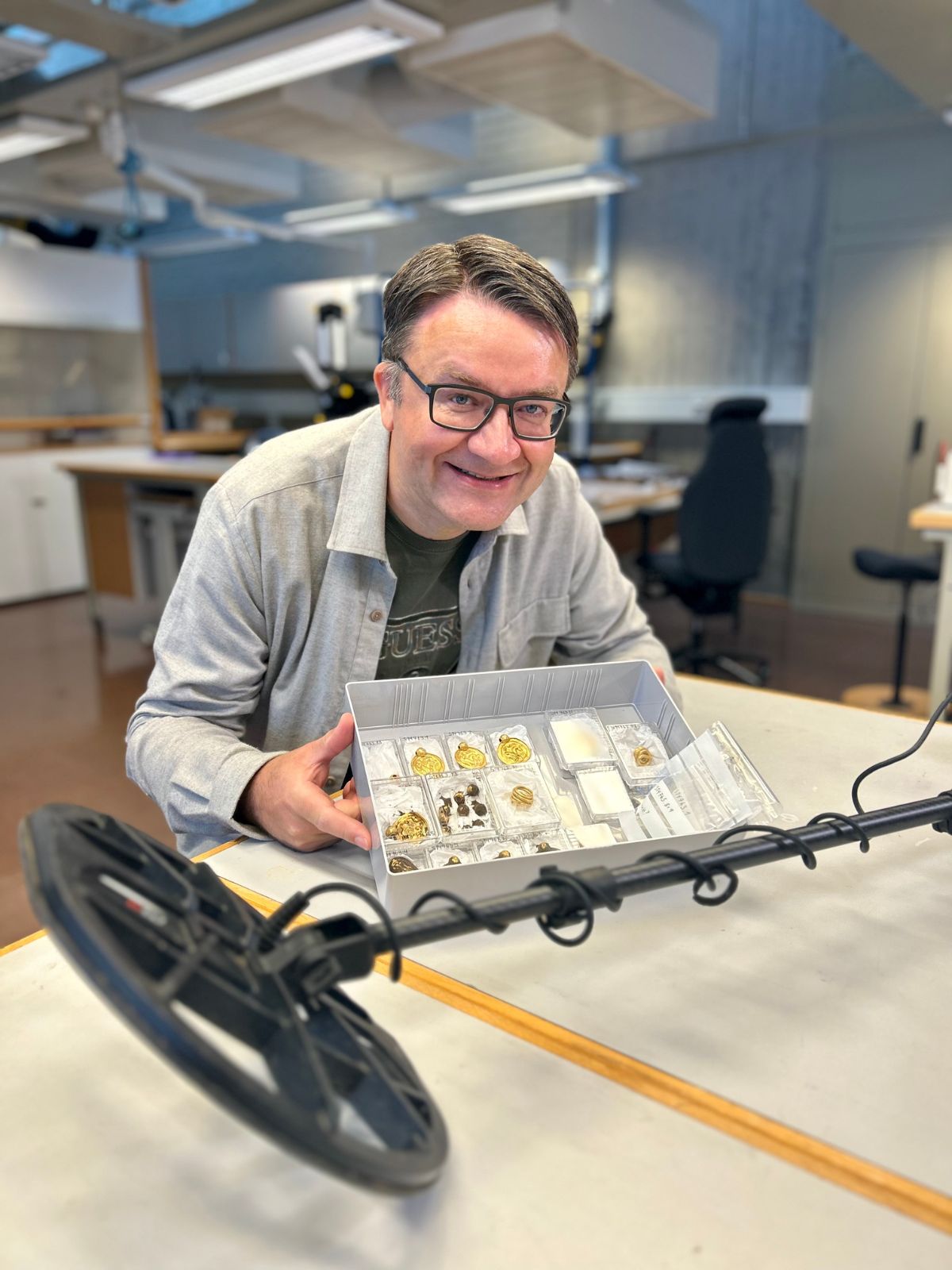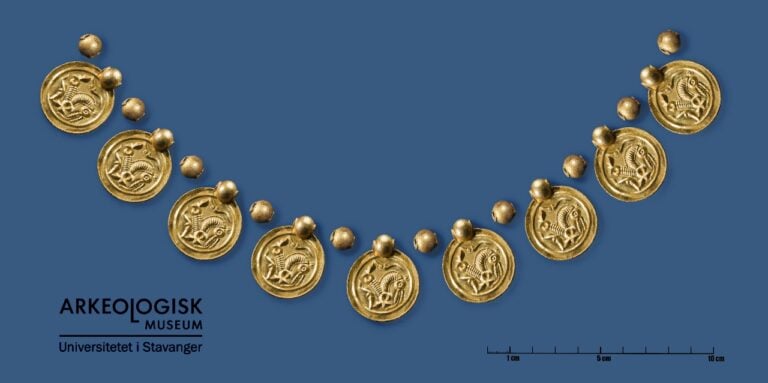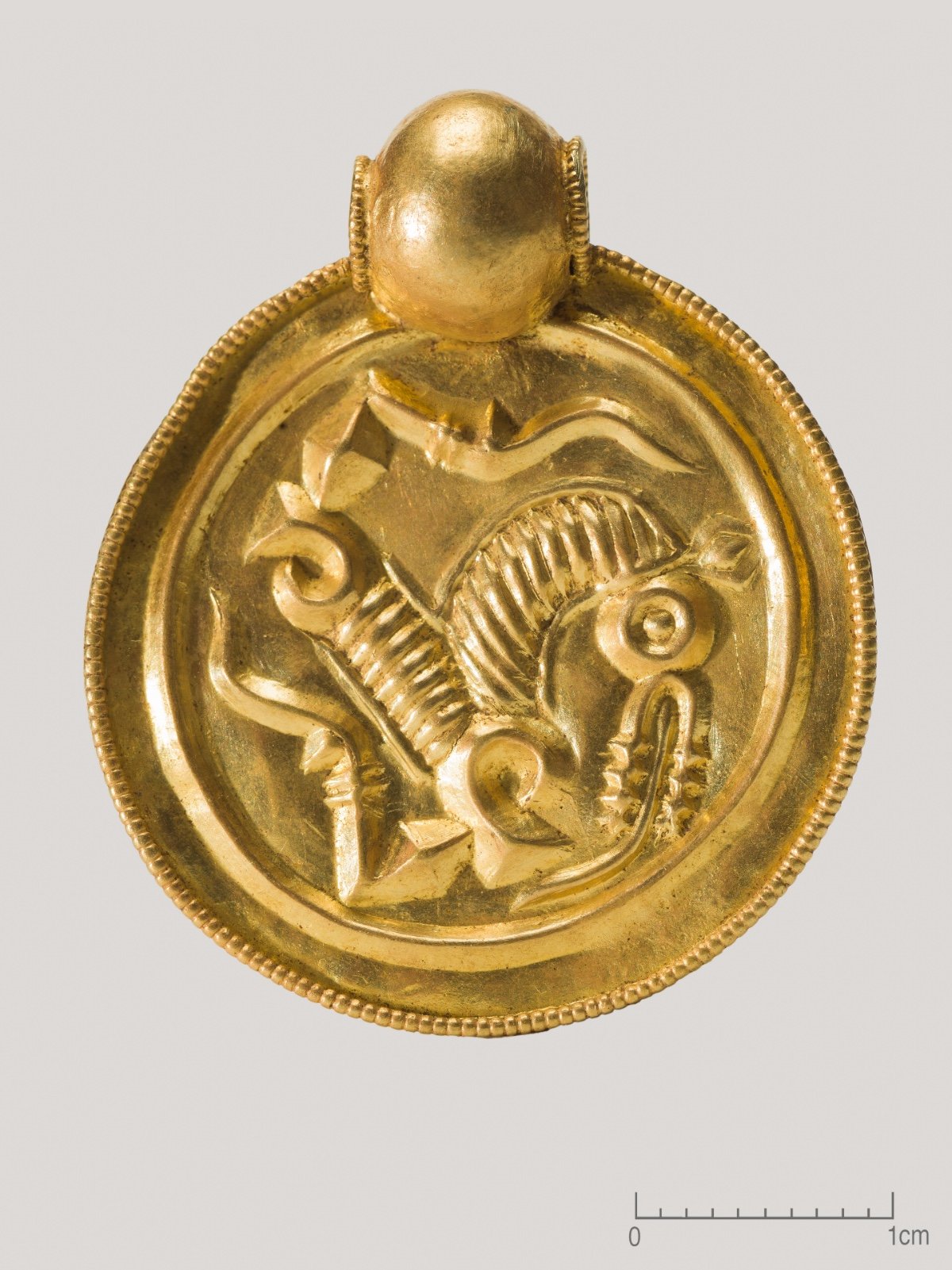A recent metal detector find described as the “gold discovery of the century” has become part of the collection at a Stavanger museum. Here's all the details.
When a hobbyist metal detector user stumbled upon this remarkable find on Rennesøy island, he was initially disappointed. He thought he'd found chocolate coins. What he actually found was 100 grams of gold, which had been buried for 1,500 years.

Among the discovery were nine coin-like gold pendants engraved with rare horse symbols, along with ten gold beads and three gold rings. The monetary value of the discovered gold remains significant even today.
The remarkable amateur discovery
51-year-old Erlend Bore from Sola, just outside of Stavanger, was relatively new to his hobby of metal detecting. He said he began the hobby partly to embark on treasure hunts but mostly to engage in something that would get him off the sofa.
“I had been searching along the shore but only found scrap metal and a small coin. So, I decided to explore higher ground, and the metal detector immediately started beeping,” explained Bore.
He then dug up a clump of earth containing what looked to be gold coins. “At first, I thought I had found chocolate coins or plastic pirate treasure. It was surreal,” added Bore, adding that his heart raced when the magnitude of his discovery dawned.

All objects dating before 1537 and coins older than 1650 must be reported. The county municipality serves as the primary point of contact for archaeological finds made by private individuals. The finds are registered by the county municipality before being handed over to the Museum of Archaeology.
“We commend the detectorist for doing everything right when he made this exceptional discovery. He marked the find location and stopped searching immediately,” said Marianne Enoksen, head of Rogaland county's cultural heritage department.
“He contacted us, and we informed the Museum of Archaeology. This allowed us to return to the discovery site shortly after to conduct further investigations,” she added.
Bore was looking on private property with the permission of the landowner. Norway's Cultural Heritage Act awards a finders fee to anyone discovering loose cultural artefacts. Such a fee is divided between the landowner and the finder.

Much more than an everyday find
University of Stavanger Museum of Archaeology associate professor Håkon Reiersen said the gold pendants date from around 500 CE. Although resembling coins, they were used primarily as jewellery.
“The nine bracteates and the gold beads would have formed an exceptionally splendid necklace, which was crafted by skilled goldsmiths and worn by the most powerful individuals in society,” he said.
It's not just the age of the gold that makes this such a remarkable find. It's the first such find of so much gold together in Norway since the 1800s. “It’s also an uncommon find in a Scandinavian context,” he added.
“Many of Scandinavia’s major bracteate finds were buried in the ground during the mid-500s, towards the end of the Migration Period. This period likely marked a crisis with crop failures, worsening climate and plagues. The numerous abandoned farms in Rogaland from this era suggest that the crisis hit this region particularly hard,” Reiersen explained.

“Based on the location of the discovery and findings from similar contexts, these were most likely either hidden valuables or offerings to the gods during that dramatic time,” Reiersen concluded.
Rare horse symbols
Museum of Archaeology's professor Sigmund Oehrl said the gold pendants from Rennesøy are of an extremely rare type. They depict a horse motif in a previously unknown form.
“These motifs differ from those on most other gold pendants found so far. Typically, the symbols on the pendants depict the god Odin healing the sick horse of his son Balder. During the Migration Period, this myth was seen as a symbol of renewal and resurrection, believed to offer protection and good health to the wearer,” he explained.
However, the Rennesøy bracteates only depict the horse. A similar horse motif, along with serpent-like creatures, can also be found on a couple of gold bracteates discovered elsewhere in Rogaland and in Southern Norway.
“On these gold pendants, the horse’s tongue hangs out, and its slumped posture and twisted legs suggest that it is injured. Similar to the Christian symbol of the cross, which was spreading in the Roman Empire at the same time, the horse symbol represented illness and hardship, but also hope for healing and new life,” he added.

